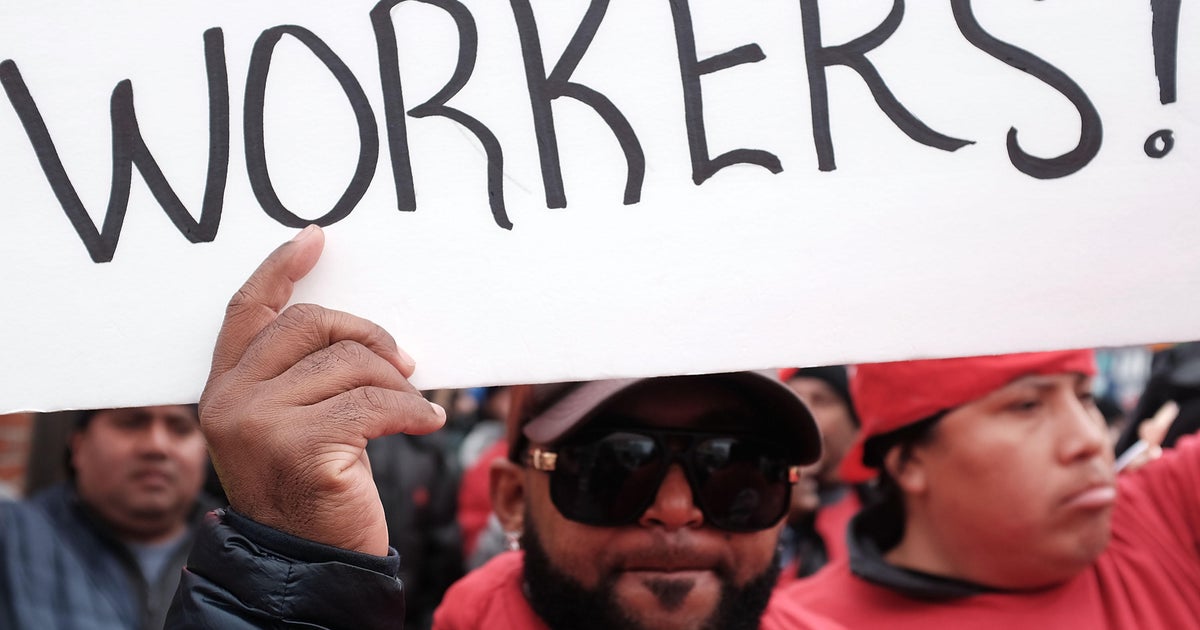Workers in 20 states will see a wage increase on January 1, when the minimum wage increases, thanks to cost of living adjustments and other programmed increases. At the end of the year, four other states and Washington, DC will increase their basic wages, meaning that low-wage workers in almost half the country can earn higher wages next year.
Salary increases occur as the federal minimum wage, which has not risen for more than 11 years, remains bogged down at $ 7.25 an hour – the longest period that the base salary has passed without an increase since it began in 1938 At the same time, workers across the country are struggling in the midst of an economic recession caused by the coronavirus pandemic, which continues to spread non-stop.
A higher minimum wage could help these workers regain their financial balance, especially so-called essential workers, such as grocery store clerks and domestic health aides, whose jobs helped keep the economy going during the crisis, but whose incomes are among the most low. Critics say higher minimum wages can hurt the job market by slowing job creation – although recent economic research has found no support for that claim. Instead, advocates say a higher minimum wage helps the economy by putting more money in the pockets of workers who tend to spend it on local businesses and services.
The salary increases in 2021 “are an indication that people understand how much the $ 7.25 federal minimum wage keeps people in poverty,” said Holly Sklar, CEO of Business for a Fair Minimum Wage, a network of owners of companies and organizations that advocate a higher minimum wage.
Sklar added: “Consumer spending drives our economy and raising the minimum wage is a powerful way to boost the economy.”
Some companies claim that higher wages pay off in the long run, as they reduce turnover and generate greater job satisfaction.
“The direct costs of turnover are obvious – recruitment, interviews, training,” Kelly Vlahakis-Hanks, CEO of ECOS, which makes environmentally friendly cleaning products, told CBS MoneyWatch. “Indirect costs are less obvious, but they are significant and, I think, highly underestimated.”
After her company increased its starting salary to $ 17 an hour in 2014, its voluntary turnover decreased by 50%, from 3% to 1.5%, she noted. “We have employees who have been with our company for 20, even 30 years,” added Vlahakis-Hanks.
Loss of purchasing power
Since the last increase in the federal minimum wage – to $ 7.25 an hour, starting July 24, 2009 – the cost of living has increased by more than 20%, while the price of essential goods such as housing and health has increased even more fast. This created financial problems for many low-wage workers, who are increasingly paying more of their housing and other living expenses.
About half of all renters are “cost-laden”, which means that they pay more than 30% of their housing income, according to Harvard’s Joint Center for Housing Studies. After paying rent, people who earn less than $ 15,000 a year have about $ 410 left each month for food, transportation, health care and other essentials, the study noted.
The minimum wage “came to help us recover from the Great Depression,” noted Sklar. “It has a dual purpose: to alleviate worker poverty and increase consumer spending.”
Which states are raising the minimum wage in 2021?
Michigan is expected to maintain its minimum wage at $ 9.65 on January 1, according to the National Federation of Independent Businesses, a trade group. This is because of a law that prohibits salary increases if the state’s annual unemployment rate in the previous year exceeds 8.5%.
Until October, the state’s unemployment rate averaged 10.2%, meaning it is unlikely to fall below 8.5% before the end of the year, the trade group noted. Otherwise, Michigan would have raised its minimum wage to $ 9.87.
Below are the names and new wage rates of the states that will increase their minimum wage in 2021:
- Alaska, to $ 10.34 an hour on January 1
- Arizona, to $ 12.15 an hour on January 1
- Arkansas, at $ 11 an hour on January 1
- California, to $ 14 on January 1
- Colorado to $ 12.32 on January 1
- Connecticut, to $ 13 on August 1
- Florida, to $ 8.65 on January 1
- Illinois, to $ 11 on January 1
- Maine, to $ 12.15
- Maryland, to $ 11.75 on January 1
- Massachusetts, to $ 13.50 on January 1
- Minnesota, to $ 10.08 for employers with annual gross revenue of at least $ 500,000 and $ 8.21 for employers under $ 500,000, on January 1
- Missouri, to $ 10.30 on January 1
- Montana, to $ 8.75 on January 1
- Nevada, to $ 8.75 or $ 9.75 on July 1, with the highest rate valid for employers who do not offer health insurance to workers
- New Jersey, to $ 12 on January 1
- New Mexico, to $ 10.50 on January 1
- New York State to $ 12.50 on December 31, 2020, while Long Island and Westchester will increase to $ 14 on December 31, 2020
- Ohio, to $ 8.80 on January 1
- Oregon, to $ 12 on July 1, although it will increase to $ 13.25 for the Portland area and to $ 11.50 in non-urban counties
- South Dakota, to $ 9.45 on January 1
- Vermont, to $ 11.75 on January 1
- Virginia, to $ 9.50 on May 1
- Washington State to $ 13.69 on January 1
- Washington, DC will raise its $ 15 hourly minimum wage in July to adjust to the change in the cost of living in the previous 12 months
